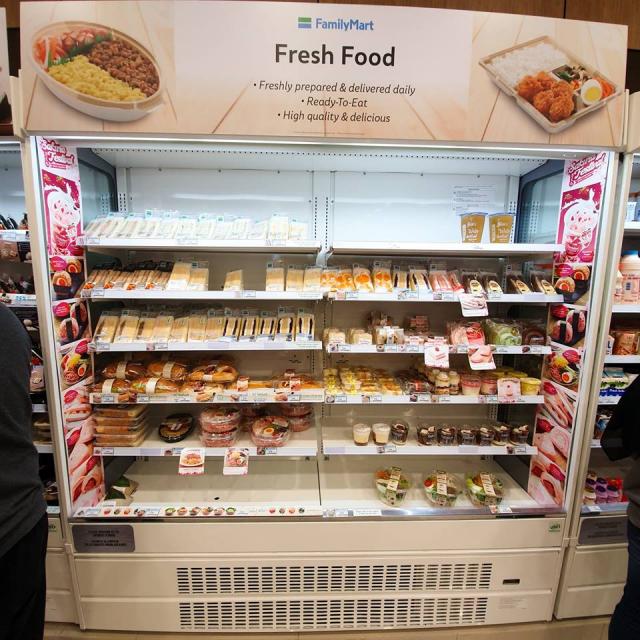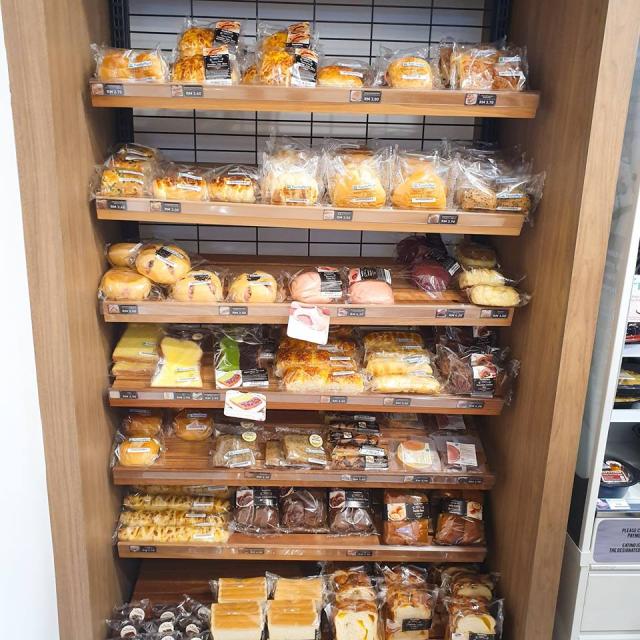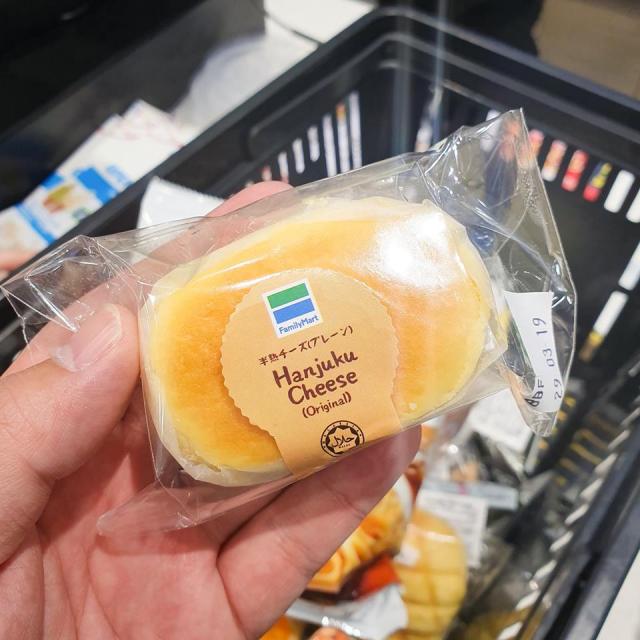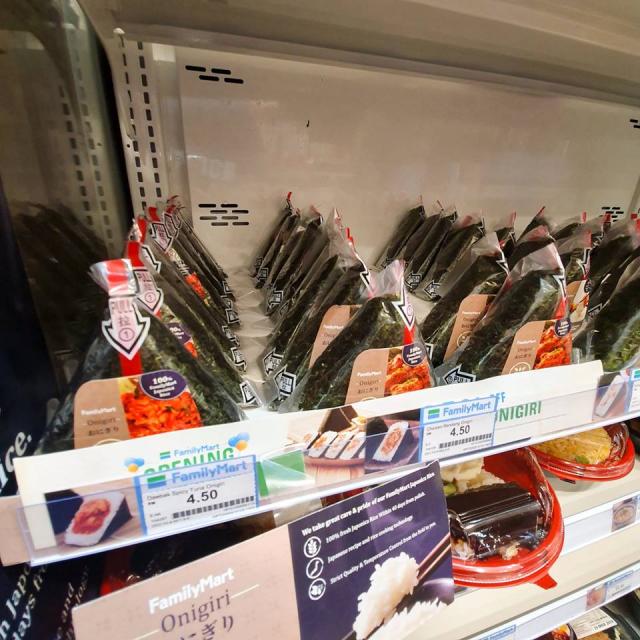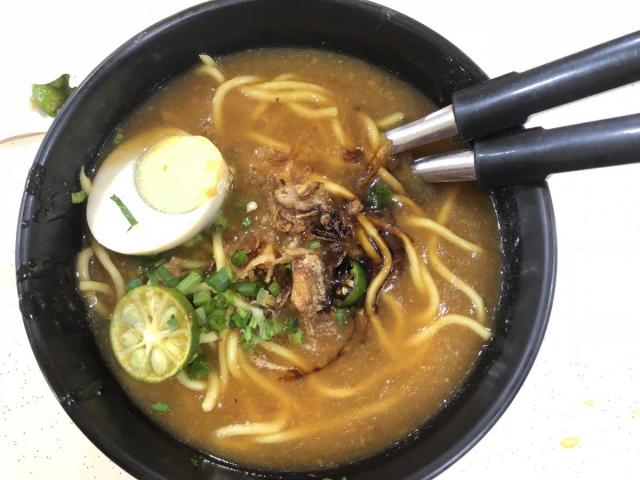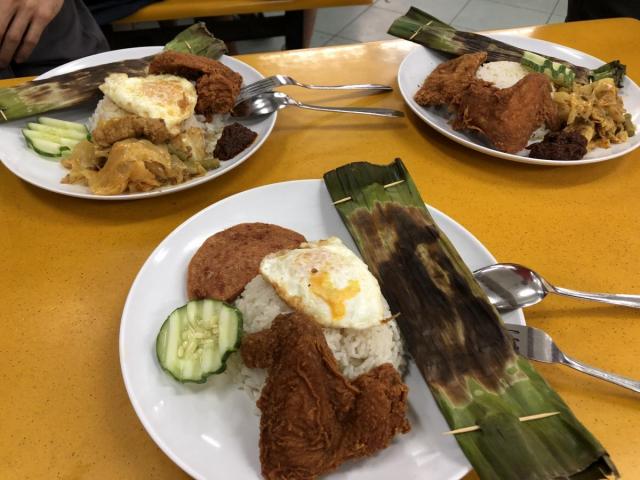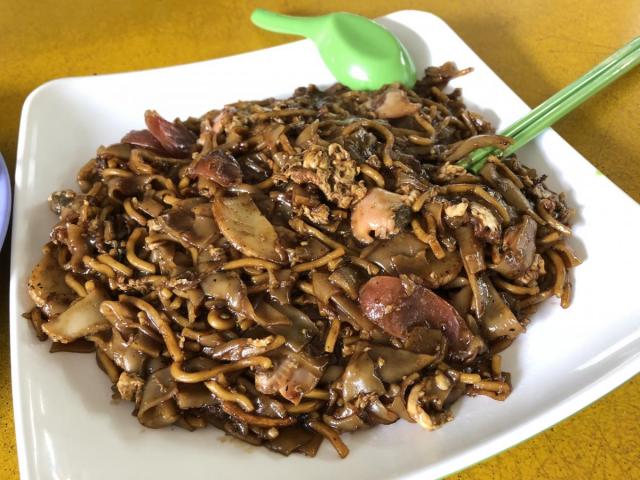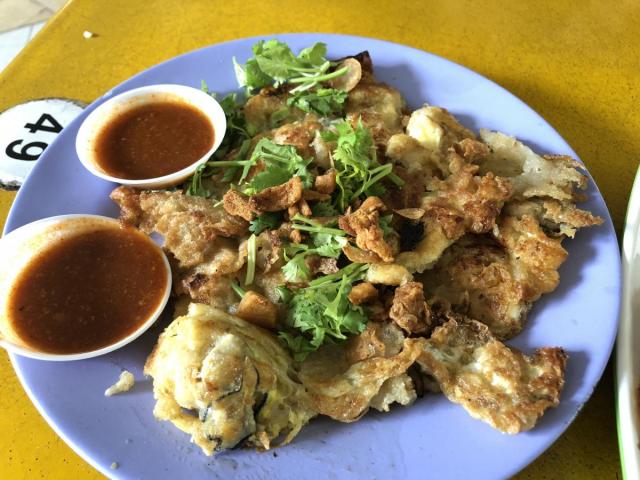Search the Community
Showing results for tags 'food'.
-
Strangely I personally find their hamburgers pretty good I had when I visited the Philippines. https://asia.nikkei.com/Business/Food-Beverage/Jollibee-aggressively-expands-globally-and-beyond-fast-food?utm_campaign=GL_asia_daily&utm_medium=email&utm_source=NA_newsletter&utm_content=article_link&del_type=1&pub_date=20210927190000&seq_num=8&si=44594 Jollibee aggressively expands globally and beyond fast food Filipino empire takes full control of Tim Ho Wan as it spreads across 33 regions Filipinos working abroad have helped the Jollibee chain spread globally, especially in the U.S. and Middle East. © AFP/Jiji YUICHI SHIGA, Nikkei staff writerSeptember 27, 2021 16:22 JST MANILA -- Filipino restaurant giant Jollibee Foods is attempting to set itself up for rapid growth once the pandemic winds down with an aggressive global brand acquisition strategy that is moving the group further away from its fast-food roots. In August, the company said it would acquire the remaining 15% stake in Tim Ho Wan from its partner Titan Dining for 71.56 million Singapore dollars ($52.8 million). Jollibee initially bought a 45% interest in Tim Ho Wan for SG$45 million in May 2018, then gradually increased the stake up to 85% as of October 2020. Tim Ho Wan is a popular Hong Kong-based, Michelin-starred restaurant chain known for inexpensive but high-quality dim sum dishes. When Jollibee bought its first stake in the chain, Titan had the right to operate the Asia-Pacific outlets. But Titan later acquired both Tim Ho Wan's brand and trademark. Tim Ho Wan operates over 50 mostly franchised stores across Asia, primarily in Singapore, Taiwan, the Philippines and Hong Kong. Since Jollibee began purchasing its stake, the chain has expanded its presence in mainland China as well. A joint venture between Jollibee and Titan opened a Tim Ho Wan restaurant in Shanghai, the chain's first outlet in China, last September. The group has since grown its presence in the huge market and plans to increase the number of its restaurants in China to 100 in the next four years. Hong Kong-based Tim Ho Wan is Michelin-starred restaurant chain known for inexpensive but high-quality dim sum dishes. © Getty Images The Jollibee group was operating 5,816 outlets around the world, including around 3,200 in the Philippines, as of June 30, serving their signature fried ChickenJoy, burgers and other dishes. Jollibee is the largest fast-food chain in its home country, operating more restaurants than McDonald's there. But Jollibee brand restaurants account for only 26% of the group's outlets around the world. The company's acquisition spree so far has resulted in a takeout empire that includes a variety of quick-service brands. With 17 brands in 33 countries already, Jollibee CEO Ernesto Tanmantiong has said overseas operations will drive the conglomerate's revenue growth this year and beyond. In September 2019, the group announced it had acquired U.S.-based The Coffee Bean & Tea Leaf for $350 million. Before the acquisition, Jollibee was operating some 4,600 locations, a figure that has grown by 25% in the past two years. The group has never been gun-shy about investing in businesses. In 2018, it bought out Denver, Colorado-based Smashburger. In 2012, it purchased a 50% stake in SuperFoods Group, a Vietnamese restaurant group that operates coffee shop chain Highlands Coffee and Vietnamese noodle house chain Pho 24. The Jollibee fast-food chain itself has also been expanding its international footprint, though with outlets that mainly cater to Filipinos working abroad. The Philippines' large English-speaking population is a major source of immigrant workers. Some 10 million Filipinos, 10% of the population, work outside the Southeast Asian country, according to estimates. The U.S. and the Middle East attract many of these workers. The acquisitions of Tim Ho Wan and The Coffee Bean & Tea Leaf will help Jollibee's expansions in the Chinese and U.S. markets as a diversified player. Jollibee has announced its intention to enhance its Chinese food offerings through Tim Ho Wan and other operations. The group racked up 71.3 billion pesos ($1.4 billion) in sales in the first six months of 2021, up 13.7% from a year earlier. It earned 1.1 billion pesos in net profit in the first half, a drastic turnaround from an 11.9 billion peso loss one year earlier. Overseas markets contribute around 40% of the company's overall revenue, and its overseas businesses hold strong growth potential. The group now plans to rev up its global expansion strategy as it eyes rapid growth once the pandemic winds down.
-
How many have you tried? https://www.straitstimes.com/lifestyle/food/17-new-entrants-to-michelins-bib-gourmand-list-for-2018-50-hawker-stalls-and Let's go try some.. These are the hawker food... not the high end stuff... Next gathering guys? BIB GOURMAND SELECTION _ MICHELIN GUIDE SINGAPORE 2018.pdf
- 27 replies
-
- 3
-

-
- bib gourmand
- food
-
(and 3 more)
Tagged with:
-
https://asia.nikkei.com/Spotlight/Asia-Insight/Singapore-cultivates-Silicon-Valley-of-food-in-a-hungry-Asia?utm_campaign=GL_asia_daily&utm_medium=email&utm_source=NA_newsletter&utm_content=article_link&del_type=1&pub_date=20210706190000&seq_num=2&si=44594 Singapore is home to at least 28 high-tech, indoor urban vegetable farms that a food resilience official said allow the city-state to "grow more with less." © Reuters Asia Insight Singapore cultivates 'Silicon Valley of food' in a hungry Asia Lab meat and indoor greens thrive as COVID highlights regional challenge SANDY ONG, Contributing writerJuly 6, 2021 05:00 JST SINGAPORE -- It was a warm Singapore evening and well-heeled diners at the riverside restaurant 1880 were feasting on intriguing-sounding dishes like "Forest Floor" and "Flooded Future." But the real stars of the show were two less flamboyant-sounding mains: chicken and waffle, and chicken bao. When served, the pan-fried chicken was firm and pulled apart tenderly at the touch of a fork. This, however, was no ordinary poultry. It was made from stem cells taken from a chicken feather and grown in special bioreactors. The diners were among the first few paying customers to feast on lab-grown chicken. Kaimana Chee -- a chef at San Francisco-based food startup Eat Just, which created the chicken -- helped whip up that night's meal. "I cried because I never thought I would see it on a consumer plate within my lifetime," he told Nikkei Asia. With "so much regulatory red tape" and global caution surrounding lab-grown meat, Chee, 43, was convinced getting the green light would take years. He figured his mission at Eat Just, which he joined in 2016, was to concoct inspiring dishes that would "plant the seed for another generation." So in December, when Singapore became the only country to approve the sale of such protein, Chee was dumbstruck. Many industry observers were less surprised. "It's no coincidence that Singapore is the world's first cultivated meat market," said Mirte Gosker of the nonprofit Good Food Institute Asia Pacific (GFI APAC). "The government has invested the resources necessary to create a welcoming ecosystem for food innovation." Singapore's foray into lab meat and alternative proteins -- those that come from plants, insects, algae and fungi -- is part of a concerted push to shore up its food resilience. The city-state makes up Asia's vanguard in the battle to ensure reliable access to food. United Nations estimates suggest over 350 million people across the region are undernourished while roughly 1 billion faced moderate or severe food insecurity in 2019 -- either dealing with uncertain access or actually running out of food, sometimes for days. The challenge has become more pressing since COVID-19 hit, worsening acute food insecurity in Asia and giving governments alarming glimpses of how a crisis can affect supplies. One approach Singapore has taken is to diversify its sources. It now imports food from over 170 countries and regions, about 30 more than in 2004. Kaimana Chee, a chef at the San Francisco-based food startup Eat Just, says he never thought he would see lab-grown chicken on a consumer plate in his lifetime. (Photo by Sandy Ong) It is also striving to become more self-reliant. In March 2019, it announced a "30 by 30" goal -- to produce 30% of its nutritional needs locally by 2030, up from 10%. "Resilience means having the ability to withstand perturbations to the food supply," said Paul Teng, a food security expert at Singapore's Nanyang Technological University (NTU). When Teng and his colleagues began studying food resilience around 2005, the focus was on food security. "Nobody listened to us," he said. It is a subtle but important distinction. Wealthy Singapore ranks fairly high on measures of food security -- 19th on the Economist Intelligence Unit's 2020 global ranking -- but that does not mean it can rest easy. "The government's strategy was, 'If we increase GDP, and have the means to purchase food, then we don't have to worry because somebody will always have food to sell,'" Teng said. "This is fine and dandy if there is no disruption to [the food] production and supply chain." But price hikes during the 2008 financial crisis, Malaysia halting fish exports in 2014 and other events have highlighted vulnerabilities. Then came the pandemic. "Globally, COVID-19 has resulted in some disruption, as some source countries banned exports of certain food items to cater to their domestic needs or went under lockdown," said Melvin Chow, senior director of the Singapore Food Agency's Food Infrastructure Development & Management Division. He added that increasing production under the 30 by 30 strategy would provide a buffer to mitigate disruptions from abroad. But growing more food is easier said than done in Singapore, which measures 50 km by 27 km. With the world's third-highest population density, it has set aside only 1% of its land for agriculture. The city, which has always been deft at working around its space and resource constraints, now intends to "leverage our science and technology capabilities to develop innovative solutions," Chow said. This is where Eat Just and similar startups come in. "Plant-based and cell-based proteins require far less space and resources to produce the same amount of food as traditional food sources," said Bernice Tay, director of food manufacturing at Enterprise Singapore, a statutory board dedicated to the development of small and mid-size businesses. Eager to foster food tech, the government has allocated up to 144 million Singapore dollars ($107 million) for food-related R&D programs until 2025. Enterprise Singapore has also partnered with several global accelerators, including Big Idea Ventures, which has a $50 million fund for alternative proteins. In April, Singapore launched a Future Ready Food Safety Hub to study the safety of novel foods and support companies' research. And in September, NTU will begin offering undergraduates a one-semester course focused on the science and business of producing alternative proteins, in collaboration with GFI APAC. Andre Menezes, co-founder of Next Gen, a Singapore-headquartered company that introduced soy-based chicken thighs in March, called the city a "complete ecosystem in a very small, concentrated island." "Singapore is starting to position itself as the Silicon Valley of food tech," said Menezes, whose thigh product is now found in over 45 local restaurants. In February, Next Gen raised $10 million in seed funding from a group of investors including Singapore's state-owned Temasek International -- the largest splash yet by a plant-based food tech venture. The company in June expanded into Hong Kong, Macao and Kuala Lumpur. Not your average nugget: Singapore was the first country to approve lab-grown chicken like this, amid a push for greater food resilience. (Photo by Sandy Ong) More than 15 alternative protein companies have set up shop in Singapore in the past two years. In addition to Eat Just and Next Gen, these include international players such as California dairy-substitute maker Perfect Day as well as homegrown Shiok Meats and Gaia Foods, which are working to produce cultured seafood and red meat, respectively. Another pillar of Singapore's 30 by 30 goal is high-tech, indoor urban farming. Thirty-one such farms already exist -- 28 for vegetables, three for fish. The fact that the farms are indoors makes them "resilient against some of the impacts of climate change," Chow said. They employ smart technologies that "allow us to grow more with less," with yields 10 to 15 times higher per hectare compared to traditional vegetable and land-based fish farms. One farm, Commonwealth Greens, can harvest up to 100 tons of vegetables annually, close to 1% of all leafy greens grown locally. In high-ceilinged rooms of a large industrial building, it grows rows of verdant mustard, chard, sorrel and various lettuces in plastic containers. Each grow rack is roughly 1 meter long and paired with its own strip of LED lights, suspended from the ceiling like a series of bright vertical blinds. The "brains" of the system lie at the front of each room: two sensors. One controls the air temperature, relative humidity, carbon dioxide and acidity levels. The other measures the amount and composition of liquid nutrients supplied to the greens. "Our technology combines the use of the Internet of Things, which enables us to gather very rich amounts of data that is critical for the plants," said Sven Yeo, co-founder and chief technology officer of Archisen, the agritech company that runs the farm. "When we grow crops, we have something called a crop recipe," he said. This is essentially a list of parameters -- light, pH, temperature, and so on -- that Yeo and his team refine to optimize a plant's growth so that it "maximizes its nutrition and flavor profile." The hydroponics-based system consumes 95% less water and 85% fewer fertilizers than traditional, soil-based ones. Commonwealth Greens can harvest up to 100 tons of vegetables annually, close to 1% of all leafy greens grown locally. (Photo by Sandy Ong) Proponents say indoor farms and alternative proteins offer better produce and cleaner meats, with minimal or none of the pesticides, antibiotics or hormones commonly found in today's food products. "Consumers are increasingly more critical of the food they are eating," said Aileen Supriyadi, a research analyst at the market research firm Euromonitor International. "Especially with the recent COVID-19 pandemic and African swine fever cases affecting livestock in the region, consumers have grown more concerned with regard to food safety." Cultured meat, in particular, has its skeptics. In a YouGov Omnibus survey of 1,068 Singaporeans in December, 42% of the respondents said they would not eat such meat, local media reported. A Euromonitor survey in 2020 found that 36.5% of Asia-Pacific consumers preferred all-natural products, compared with 33.3% in Europe and 28.4% in North America. Still, for Singapore, the high-tech farms and labs provide plausible solutions for increasing food production. Some experts believe they can be a way forward for other Asian countries, too. Indoor farms are not new. NTU's Teng said there are more than 400 throughout Asia. But compact, high-yielding ones are especially useful in "highly urbanized cities with higher purchasing power, where real estate cost is high," Archisen's Yeo said. Jakarta is a good example, according to Christian Prokscha, founder of Eden Towers, which opened a vertical farm there in February. "You can grow things on the hills outside Jakarta," he said, "but the problem is that you have a very long logistics route." Additionally, Yeo says "the one big challenge" of indoor farms is the cost of facilities and sophisticated equipment. Singapore has provided generous grants over the years, including a SG$60 million fund launched in April that helps would-be farmers defray initial building expenses. But few Southeast Asian countries have pockets as deep as Singapore's. When it comes to alternative proteins, high selling prices are another tall hurdle. Nevertheless, Asia is "uniquely primed to capitalize on the shift toward alternative proteins," said GFI APAC's Gosker, citing the region's "rich agricultural landscapes, expansive infrastructure and manufacturing power, world-renowned innovation hubs and unparalleled market size." She went on: "Local producers now have the ability to source a nearly unlimited range of ingredients, process them in new and innovative ways, and manufacture the next generation of plant-based meat -- all in the same corner of the world."
-
Hi, Looking for a good peranakan food for family dinner. Any recommendation? Preferable east side
- 43 replies
-
- peranakan food
- peranakan
-
(and 2 more)
Tagged with:
-
Personally, for meat, I think still have to wash. http://www.asiaone.com/health/6-foods-you-should-not-wash-cooking
- 23 replies
-
- 1
-

-
- wash food
- contamination
-
(and 4 more)
Tagged with:
-
Singapore’s hawker culture was officially approved on Wednesday (16 December) to be inscribed into UNESCO’s list of intangible cultural heritage of humanity.The 24-member inter-governmental committee (IGC) made its decision during an online meeting, following a recommendation from a 12-member evaluation body last month. “Singapore is tremendously honoured to have our hawker culture as our very first inscription on the UNESCO representative list of the Intangible Cultural Heritage of Humanity,” said Edwin Tong, Minister for Culture, Community and Youth, in a video shown at the meeting after Singapore got the committee’s approval. “Hawker culture is a source of pride for Singapore. It reflects our living heritage and multiculturalism and is an integral part of the daily lives of everyone in Singapore, regardless of age, race, or background. “The journey doesn’t end here. We will continue to recognise and celebrate the knowledge and cultural practices of the hawker trade, and ensure that future generations of Singaporeans can continue to appreciate, enjoy and cherish our hawker culture.” The expert panel had assessed Singapore’s hawker culture to have fulfilled all the criteria listed by the IGC. Furthermore, it commended Singapore for nominating a cultural heritage element that is thriving in a highly urbanised and culturally diverse environment, as well as for developing safeguarding measures that effectively foster dialogue, creativity and sustainability of hawker culture. It also commended the Republic for devising creative ways to encourage the community to participate in the nomination process from the outset. The nomination was also cited as a positive example for its “celebration of intangible cultural heritage, diversity, dialogue and sustainability”. There were 42 submissions in this year's bid for inclusion into UNESCO’s list. These include mechanical watchmaking by Switzerland and France, Budima dance by Zambia and tree beekeeping culture by Poland and Belarus. Among these, 25 were recommended to be inscribed on the official intangible cultural heritage of humanity list, including Singapore's bid. There are currently 463 items in UNESCO’s list of intangible cultural heritage of humanity.
- 57 replies
-
- 5
-

-
- hawker center
- unesco
-
(and 1 more)
Tagged with:
-
https://www.asiaone.com/lifestyle/celeb-fb-venture-alert-terence-cao-vincent-ng-shane-pow-and-dawn-yeoh-are-now-selling-mee Yet another food venture by local celebrities COVID cant act ah all selling atas food? Nt so sure anybody want support an fnb started by at least 2 celebrities who broke covid law OK la I sourgrape hahahaha
- 27 replies
-
- 4
-
.png)
-
I think the best fried chicken in Singapore for me is at Wisma lvl 5 beside the food court. It’s a Japanese karaage shop, at japan town. I am worried they close down because dunno why not much business leh. Weird...
-
I just found a pretty good bbq rib store at timbre+ but it is a bit far from my place. anyone know of good bbq ribs which is decently cheap like below 20sgd for a full rack? looking for bbq tomorrow...
-
Breakfast was not bad, had chunky red snapper porridge for main course but started with some fruits and a fritter So my trip will be starting from the south of Taiwan in the city of Kaohsiung then will move to Taipei Friday evening. So, when I arrive at Taoyuan Airport (near to Taipei) I have to take their High Speed Rail (HSR) to the Kaohsiung in the south. But before that I need to get to the Taoyuan HSR Station, by bus Follow the sign to go to the bus station at B1 level, just outside the glass door go to number 12 kiosk for bus number 705 and pay just $30 Inside the bus Train ticket $1,980 (non-reserve seat cost $1290, standard reserve seat costs $1330) from Taoyuan station to Zuoying Station (this is the name of the HSR station for Kaohsiung) Here comes the train https://www.youtube.com/watch?v=4vKVaVpHMl0 Inside the train
-
- 28 replies
-
- malaysian bikes bikes
- food
-
(and 2 more)
Tagged with:
-
Taking a short break to Osaka for some makan trip. Japanese food begin on-route Breakfast - Japanese rice and fried chicken in sauce
-
Today I went back to this hawker stall in Whampoa market which I ate since I was a child more than 20 years back. It really brought back memories and it still taste as nice. I just wanted to share the stall and am wondering if anyone else know about similar stalls that has been selling for a long long time and still taste as good. The stall I am talking about is the Curry Rice Stall in whampoa Market. I think they only sell for breakfast only... the braised pork there is REALLY good. Quite easy to see as there is always a queue. No newspaper cuttings though. IT still taste the same since my parents brought back for me 20 years back.... It is REALLY HARD to find the same stall selling the SAME food for 20 years. And still taste the same. Almost all my favourite childhood stalls have closed down or moved.... The only other one I know still at the same place is a Malay food stall in a Coffee shop in TPY.
-
Dont know if you would do what i just did. i cannot take it anymore. i just went to complain to the supervisor of a popular eatery that his male staff (server) who is keeping a long thumb nail had his nail soup into my bowl of bee hoon soup while holding to serve on my table. how could this be happened at all...
-
A whole new Japanese food street replacing the old Japanese food street at Jurong Point Basement 1, the link between JP1 and JP2. Its like a Japanese food coffee shop, buy food, eat and go. Price is close to a normal Japanese mass market restaurant, but GST included and no service charge. The whole place is almost cashless. You can just get a seat, scan the QR quote on the table, run through menus, place order, make cashless payment, get Q number, wait for Q to appear on the E-board, Collect eat and go. If you prefer to pay cash or Q for your order, there is a kiosk at every stall, select your order, pay cashless or go to the drink stall to make your cash payment at the cash counter, and wait for your food. However, for drinks, the stall only accept cash and nets (if I see correctly, no CC payment at the drink stall, or i might be wrong because some new handheld takes both Nets and CC payment). 1 issue tho, if you are ordering food from different stalls, you will have to repeat the process and get a few Q numbers. Here is the website link for those who are interested. http://njoydininghall.com.sg/about-us/ I dont usually take photos of my food when I dine out, so no photos of food, but here are some photos of the place and the stalls. If you like Japanese cakes and Ice cream, head over to chateraise at the start of the row (where the &JOY signboard is) , but you may need to exercise self control. I had to quickly rush out before I start to pick non stop, if not I think I toh of sugar overload..
-
Anyone can advise where can I find this? Black bean curd 黑豆干?Used to buy it from supermarkets or wet markets. But now all no more....
-
At hotel lobby taking to lobby staff Me: Hi could you please recommend a good dimsum restaurant? Lady: Yes very good restaurant Me: Yea yes I like very good restaurant Lady: ok out of the hotel turn left one block down very good restaurant Me: ok thanks so name of restaurant please Lady: oh it’s very good restaurant you can’t miss Getting agitated by now Me: Yes its a very good restaurant but I need to know the name of the restaurant can you please tell me the name of the restaurant? I arrived at the restaurant finally :oops:
- 38 replies
-
- 13
-

-
The auntie at the hawker centre recommended me to eat at this Hakka Restaurant in KL when i am there next week. https://g.co/kgs/kD2QDC Is this place good? I see the reviews like not bad.
-
Anyone tried the ondeh-ondeh, durian chendol or pulut hitam cakes there yet? https://www.google.com.sg/amp/s/eatbook.sg/ikea-ondeh-ondeh-cake/amp/
-
Geylang Serai Bazaar: Most stalls to sell traditional Malay goods, food required to meet halal criteria. Good news!! Im chinese but i enjoy going to geylang serai bazaar for the festivity during ramadan. i dunno since when the bazaar seems to have lost itself with trying to stay relevant and attract the young crowd --- Reads 'earn money, rake up rentals'. Past few years at least hipster food and drink were everywhere. im too glad that finally the organisers are doing something bout it thou rental capped at 14k by no means is low. Starting this thread for the bazaar food updates in May.
- 30 replies
-
- 2
-

-
- geylang serai
- ramadan
- (and 4 more)
-
Hey guys, Do you all know any place that sell wholesale food stuffs for BBQ. Those that sell direct from factory. Like those around woodlands loop. I would want to have the contact as I am hosting a big birthday party. Thanks in advance
-
Those who always go Japan I'm sure you're a big fan of their convenience stores - FamilyMart, Lawson, 7-Eleven!Another reason to go JB! Onigiri,Omurice,Katsu Curry Rice, Oden, Sandwiches, Japanese cheesecakes etc! Why are they not in Singapore already?
- 8 replies
-
- 6
-

-
- japan
- familymart
-
(and 2 more)
Tagged with:
-
Time for Part 5. And no better person than me to kickstart it. Maggie Goreng, RK House at Serangoon Garden Mee Goreng and Maggie Goreng at Ubi Expensive Nasi Lemak at Punggol but I always like their chix wings Zion Riverside Food Center, Char Kway Teow and Oyster Omelette And my favorite ramen in Singapore! Santouka! Their pork cheeks fantastic! Time to check in for those who wanna be on page 1. No idea why the frenzy to be on page 1 but not judging ya all. Haha.
-
Anywhere selling? Is it extinct in Spore?



























